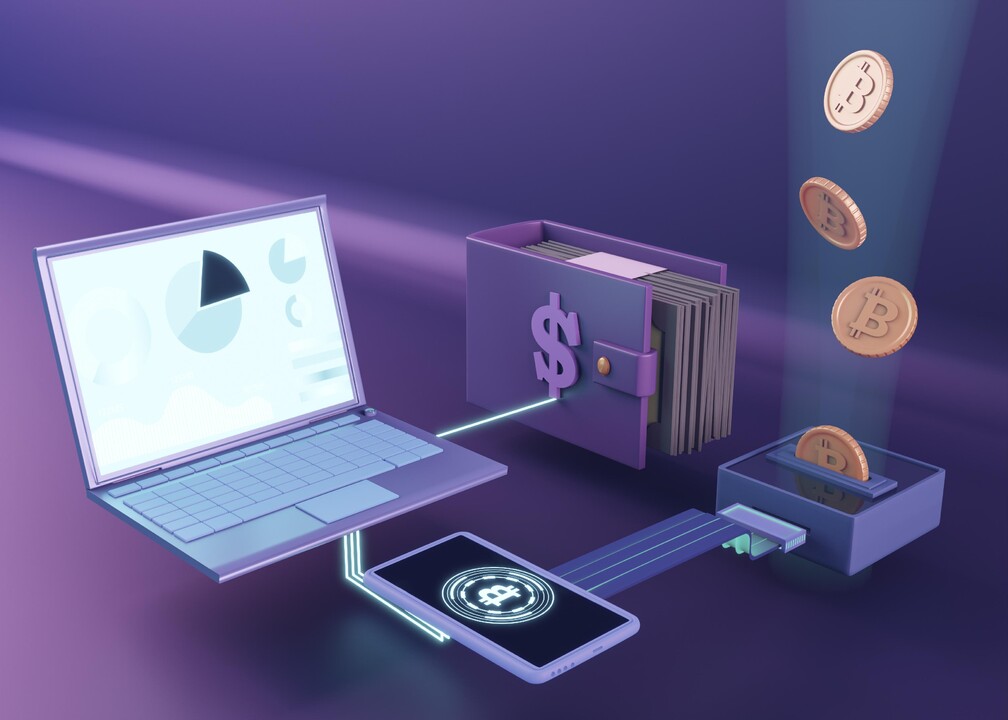With the rise of digital assets, managing cryptocurrency inheritance has become a critical need for many users. Crypto-Legacy.app is one of the leading solutions in this space, offering secure and automated ways to manage crypto legacies. In this guide, we’ll walk through the essential steps to develop software similar to Crypto-Legacy.app, from planning to implementation.
Key Takeaways
- Managing cryptocurrency inheritance is critical, and solutions like Crypto-Legacy.app provide secure options.
- Key features include secure storage, user account management, automated inheritance workflows, and integration capabilities.
- Planning for developing software should define objectives, identify must-have features, decide on platforms, and ensure security compliance.
- When developing software, utilize a modular architecture, agile methodology, and thorough testing practices.
- Ongoing maintenance and updates are essential to ensure security, scalability, and user satisfaction.
Understanding the Core Features of Crypto-Legacy.app
Before starting development, it’s crucial to understand what makes Crypto-Legacy.app effective and why users rely on it. These core features form the backbone of any similar software:
A. Secure Storage of Digital Assets
Security is the most critical aspect of any crypto legacy software. Users expect their digital assets to be protected against hacks, loss, or unauthorized access. A robust solution typically uses encryption for data at rest and in transit, multi-factor authentication (MFA), and secure key management practices. Implementing these features correctly is essential for building trust with your users.
B. User Account Management and Authentication
A smooth and secure account system is vital. This includes creating user profiles, managing access permissions, and verifying identities. Integration with authentication services like OAuth or two-factor authentication can further enhance security. A professional software development company can help design systems that are both secure and user-friendly.
C. Automated Inheritance Workflows
One of Crypto-Legacy.app’s standout features is its automated inheritance process. Users can define beneficiaries, set conditions for asset transfers, and schedule actions in advance. When developing software, it should allow similar flexibility while ensuring accuracy and reliability in executing these workflows.
D. Notifications and Reporting
Keeping users informed is critical. Notifications about account activity, upcoming transfers, or security alerts help users feel in control. Additionally, reporting tools provide transparency, showing transaction histories and system logs in an easy-to-understand format.
E. Integration Capabilities
Modern crypto legacy software often needs to integrate with wallets, exchanges, or financial platforms. Building APIs or connectors for seamless integration ensures your software is compatible with a broad range of digital assets and tools, making it more versatile and user-friendly.
F. Compliance and Audit Trails
Users and regulators expect compliance with financial laws and data privacy regulations. Providing audit trails for all transactions and clear records of actions ensures your software meets regulatory requirements and builds credibility in the market.

Planning Your Crypto Legacy Software
Proper planning is the foundation of a successful crypto legacy application. Without a clear roadmap, even technically strong software can fail to meet user expectations. Here’s how to approach planning:
A. Define Objectives and Target Users
Start by identifying the purpose of your software. Are you targeting individual crypto holders, financial advisors, or estate planners? Understanding your audience shapes the features, interface, and security protocols you implement. For example, an application for individual users may prioritize simplicity and onboarding, whereas one for advisors may require more complex reporting and multi-user access controls.
B. Identify Must-Have vs. Optional Features
Not every feature needs to be in the initial release. Core functionalities like secure storage, automated inheritance workflows, and notifications should take priority. Optional features, such as advanced analytics or integration with multiple wallets, can be added later. This staged approach reduces development risks and allows for smoother iterations.
C. Decide on Platforms when Developing Software
Determine when you are developing software whether it will be web-based, mobile, or both. Web platforms allow cross-device accessibility, while mobile apps offer convenience and real-time notifications. Planning the platform early ensures consistent user experience across devices and sets the stage for choosing the right technology stack.
D. Security and Compliance Planning
Security should not be an afterthought. Define how you will protect sensitive data, manage cryptographic keys, and meet legal requirements in the regions where your software will operate. Early planning of these protocols prevents costly rework later.

Choosing the Right Technology Stack
Selecting the proper technology stack is a critical step that directly impacts your software’s performance, scalability, and security. Here’s what to consider:
A. Backend Technologies
The backend handles the logic, data processing, and communication with databases. Popular choices include Node.js, Python (Django/Flask), and Java (Spring Boot). Choose a framework that supports scalability and secure API development.
B. Frontend Frameworks
The frontend is what users interact with, so usability is key. Frameworks like React, Angular, or Vue.js allow developers to build dynamic, responsive interfaces. Focus on intuitive dashboards, easy navigation, and clear workflows for inheritance management.
C. Database Options
Your database stores user data, transaction records, and asset information. Consider SQL databases like PostgreSQL for structured data or NoSQL options like MongoDB for more flexible storage. Ensure that encryption at rest and access controls are implemented.
D. Security Tools and Protocols
Security is non-negotiable. Incorporate encryption algorithms, two-factor authentication, and secure API protocols. For crypto-related applications, consider integrating hardware security modules (HSMs) for key management and transaction signing.
E. Cloud Hosting and Deployment
Reliable cloud services like AWS, Azure, or Google Cloud provide scalability, backup, and high availability. Select services that comply with regional regulations and offer monitoring tools to detect suspicious activity.
F. Professional Support
While it’s possible to build this software in-house, leveraging expertise can reduce risks. Partnering with a software development service ensures your architecture is secure, scalable, and aligns with industry best practices.
Designing a User-Friendly Interface
A clean and intuitive user interface (UI) is essential for any crypto legacy software. Users need to navigate complex processes like asset allocation and inheritance setup without confusion. Here’s how to approach UI/UX design:
A. Prioritize Simplicity and Clarity
The interface should be straightforward, guiding users through workflows step by step. Use clear labels, concise instructions, and tooltips to explain technical terms like private keys or beneficiary access. Avoid clutter, and make critical actions like “Add Beneficiary” or “Transfer Assets” highly visible.
B. Dashboard Design
A well-structured dashboard gives users a snapshot of their crypto assets, pending transfers, and notifications. Incorporate charts, summaries, and activity logs to provide both functionality and visual clarity.
C. Mobile and Responsive Design
Many users will access the app on mobile devices. Ensure the UI is responsive, adapting seamlessly to different screen sizes without compromising usability. Touch-friendly buttons and simplified layouts are crucial for mobile-first design.
D. Accessibility Considerations
Include accessibility features such as readable fonts, color contrast options, and keyboard navigation. This not only expands your audience but also reflects a professional and inclusive approach to software design.
E. Testing and Feedback Loops
Conduct usability testing with real users to identify pain points. Iterative design based on feedback ensures that the interface is both intuitive and functional.
Development and Implementation
Once planning and design are complete, the next step is actual development. This phase turns your ideas into a working product:
A. Agile Development Approach
Use agile methodologies to break development into manageable sprints. This allows for iterative improvements, testing, and timely feedback integration. Agile also helps teams adapt to changes in requirements or security updates efficiently when developing software.
B. Modular Architecture for Scalability
Develop your software with a modular structure, separating core functionalities like authentication, wallet management, and inheritance workflows. This ensures scalability, making it easier to add new features or integrate third-party services in the future.
C. Testing at Every Stage
Testing is crucial to ensure reliability and security. Conduct unit tests for individual modules, integration tests for system-wide functionality, and security tests to identify vulnerabilities. Automated testing tools can speed up this process while maintaining accuracy.
D. Deployment Strategies
Developing software requires careful planning. Use staging environments to test new features before releasing them to production. Ensure backup mechanisms are in place and consider continuous integration/continuous deployment (CI/CD) pipelines for faster, safer updates.
E. Collaboration and Expertise
Building complex software like Crypto-Legacy.app often benefits from professional support. Working with a software development service can provide expertise in secure architecture, efficient coding practices, and adherence to regulatory standards.
Ensuring Security and Compliance
Security is the backbone of any crypto legacy software. Users entrust your platform with sensitive digital assets, making robust security measures non-negotiable.
A. Data Encryption
All sensitive data, including private keys, user credentials, and transaction records, should be encrypted both at rest and in transit. Use proven encryption standards such as AES-256 for storage and TLS 1.2/1.3 for data transmission.
B. Secure Authentication
Multi-factor authentication (MFA) should be mandatory for all users. Consider incorporating biometric verification or hardware token authentication for high-value accounts.
C. Regular Security Audits
Conduct periodic audits to identify vulnerabilities. Engage third-party security experts for penetration testing and compliance checks.
D. Compliance with Regulations
Ensure your developing software complies with regional and international regulations regarding digital assets, such as GDPR for data privacy or local cryptocurrency regulations. Proper documentation and audit trails will protect both your users and your business.
E. API and Integration Security
If your platform integrates with wallets, exchanges, or other third-party services, secure these connections with token-based authentication, rate limiting, and encryption protocols to prevent unauthorized access.
Maintenance and Future Updates
Launching the software is just the beginning. Continuous maintenance and updates are essential to keep your platform secure, functional, and relevant.
A. Continuous Monitoring
Monitor the system for unusual activity, bugs, or performance issues. Use logging and alert systems to detect problems early and respond quickly.
B. Updating Features
Regularly enhance features based on user feedback and emerging trends in cryptocurrency and digital asset management. This ensures your software remains competitive and valuable to users.
C. Bug Fixes and Security Patches
Address software bugs and vulnerabilities promptly. Releasing security patches regularly is critical to maintaining user trust and regulatory compliance.
D. Scalability Planning
As your user base grows, ensure your infrastructure can handle increased traffic and transactions. Optimize your architecture and cloud services for scalability without compromising performance.
E. Leveraging Professional Support
Ongoing collaboration with a software development service can help you implement updates efficiently, maintain security standards, and adopt new technologies without disrupting existing operations.
Conclusion
Developing software similar to Crypto-Legacy.app requires careful planning, robust development practices, and an ongoing commitment to security and usability. By following this step-by-step guide, built around the principles seen in DOGE Software Licenses Audit HUD systems, you can create a secure, scalable, and user-friendly crypto legacy platform that meets the evolving needs of digital asset holders.











